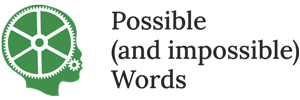
Order, disorder, evolution
The force of evidence from modern language
Theodosius Dobzhansky (1937), Paul Nurse (2020), and many others, propose that evolution is crucial to any understanding of how biology works. Noam Chomsky (2022) proposes that this includes language.
By the proposal here, in a way unusual in biology, the acquisition almost exactly recapitulates its evolution. I say almost exactly just for the sake of caution. The recapitulation may be exact.
In this evolution, there must have been at least seven steps, the last being the least thoroughly fixated and thus the most vulnerable to developmental mishap. By the latest evidence, from Shigeru Miyagawa and others (2025), this point of completion is likely to have been around 135,000 years ago. It should be said that this idea is not endorsed by Chomsky who proposes that human speech and language evolved by a single evolutionary step, and thus that there has never been any such thing as a ‘protolanguage’.
A merit of the contrary proposal here is that it reduces any need for postulating specific malformations, as proposed by Lawrence Shriberg et al (2005) and innumerable others in the same tradition. Shriberg suggests that it is necessary to postulate particular ‘phenotypes’ of disorder or malformations. The proposal here at least diminishes, if it doesn’t eliminate, the case for any specific malformations. An evolutionary model thus simplifies the theory of disorder. as required in science generally, by an idea generally known as ‘Occam’s razor’ (William of Ockham lived in the 14th century).
But in learning to talk there is a lot to learn.

